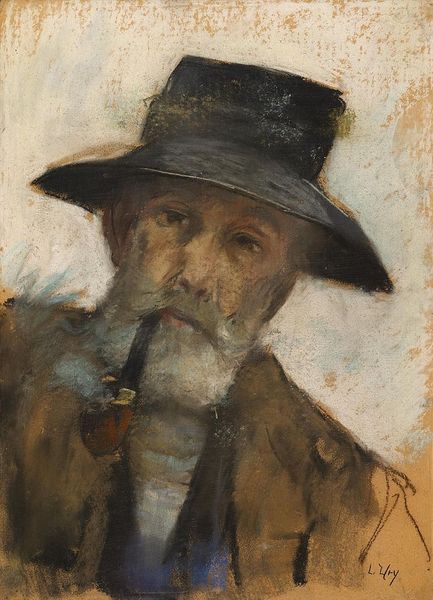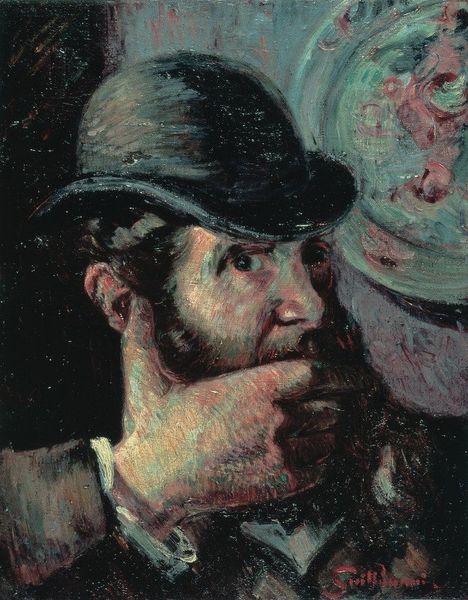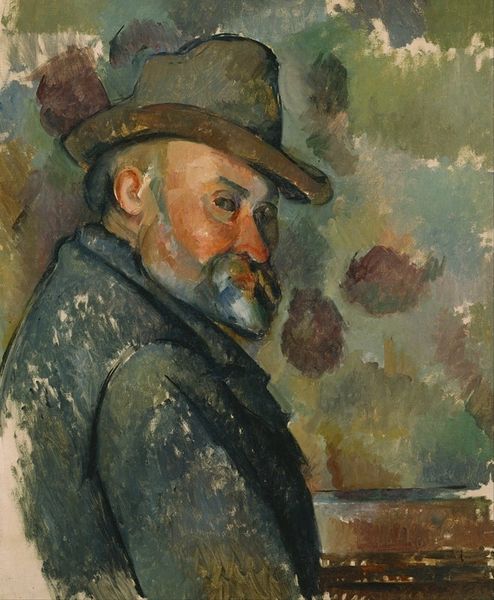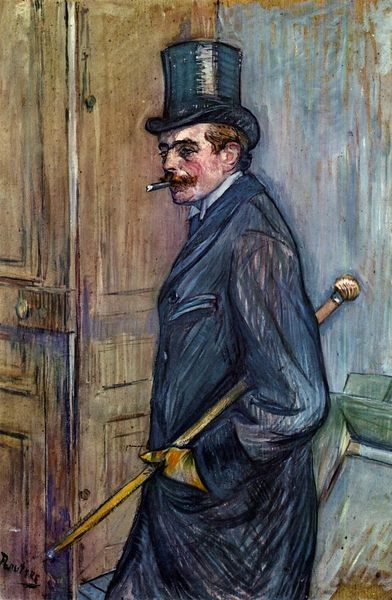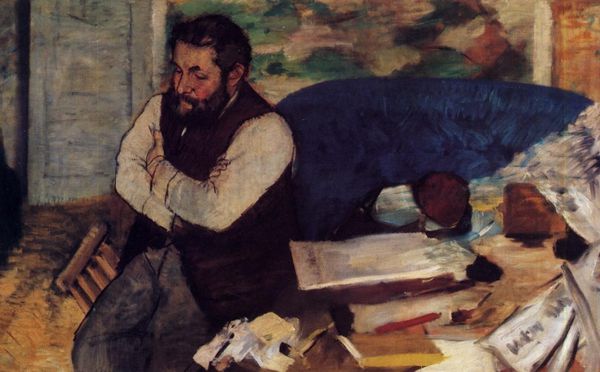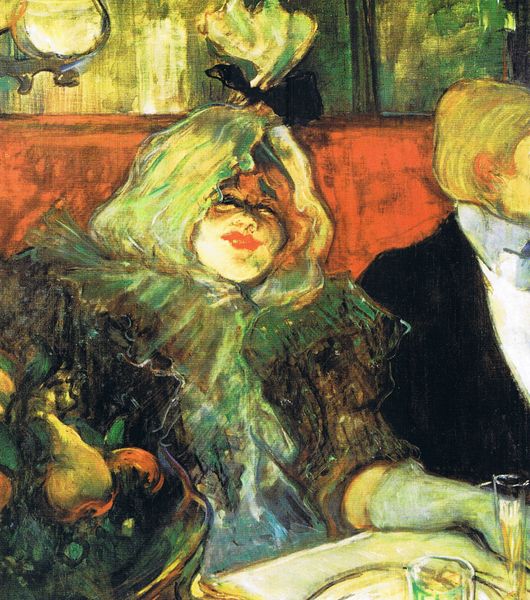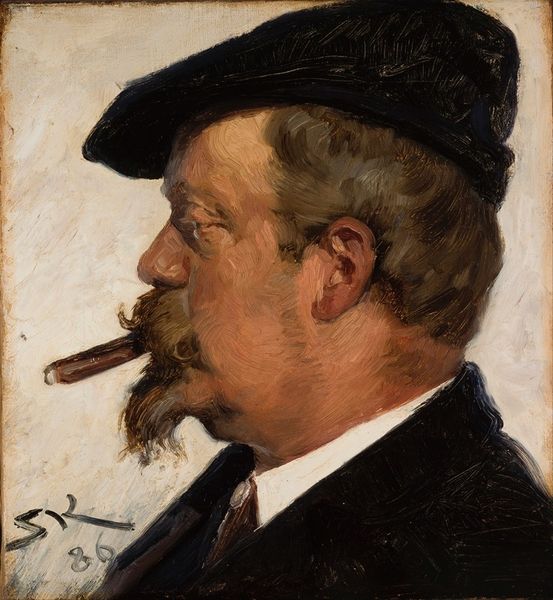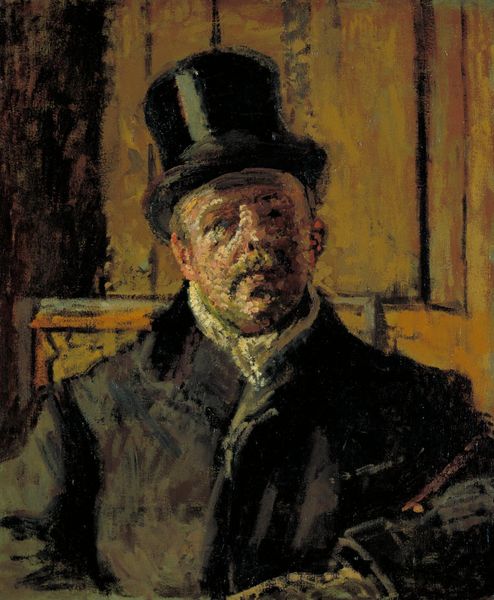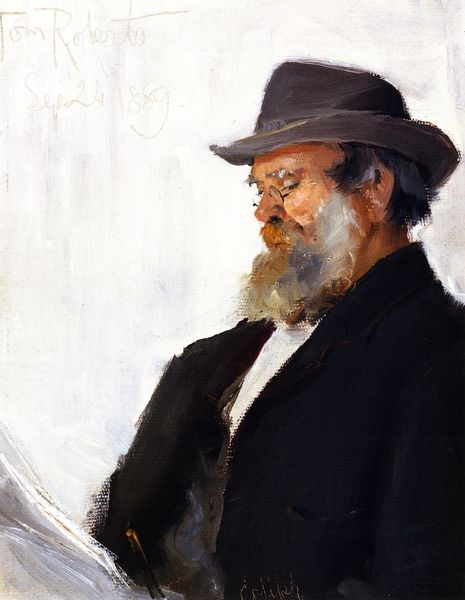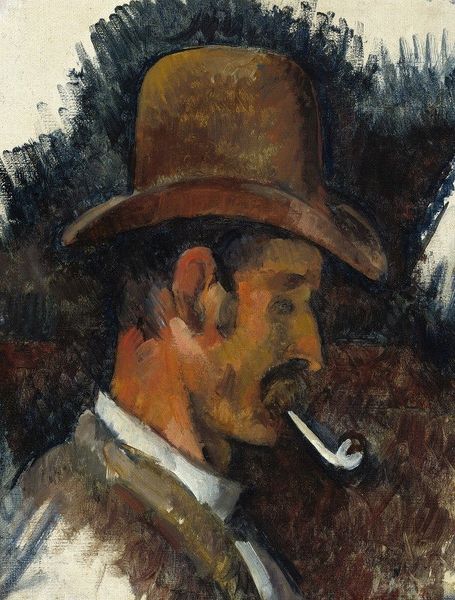
plein-air, oil-paint
#
portrait
#
flâneur
#
impressionism
#
plein-air
#
oil-paint
#
oil painting
Copyright: Public domain
Curator: Here we have Pierre-Auguste Renoir's "Claude Monet Reading" from 1872, an oil painting currently held in a private collection. Editor: My first impression is one of intimacy. It feels very domestic, softened by the swirling smoke and muted tones. It’s not just a portrait, but a glimpse into a private moment of leisure. Curator: Absolutely. It reflects a shifting attitude towards leisure and the everyday, characteristic of the Impressionists. Portraits weren't always grand commissions; they captured friends and family in ordinary activities. Editor: The way Renoir renders the newsprint feels deliberately flimsy. Compared to the tangible pipe, it seems less important, disposable even. There’s a contrast there between lasting pleasures and the ephemerality of information. Curator: That’s an interesting observation. Think of how the newspapers gained prominence in Parisian society at this time. Artists like Renoir were documenting these societal shifts through informal, intimate depictions. The "flâneur," or stroller, often seen with a newspaper, became a recognizable figure. Editor: And Renoir's visible brushwork contributes to that sense of fleetingness too. You can almost feel the pace of creation mirroring the quickly passing moments he is portraying. The textured strokes even mimic the texture of a tweed jacket! Curator: I agree. It’s less about perfect realism, and more about capturing an impression, a feeling. It demonstrates Impressionism’s break from the formal academic tradition of detailed history painting to this interest in rendering contemporary life as it's experienced. Editor: It raises interesting questions about how these materials - oil, canvas, even the tobacco - contribute to creating an image of a certain class enjoying a specific type of leisure. Smoking, reading the news, were obviously only possible thanks to exploited resources and labour elsewhere. Curator: Certainly. It makes you consider how art both reflects and participates in the social and economic systems of its time. Thank you for adding that element! Editor: My pleasure! It's always interesting how art and history intersect through these kinds of artworks and spark such discussions.
Comments
No comments
Be the first to comment and join the conversation on the ultimate creative platform.
